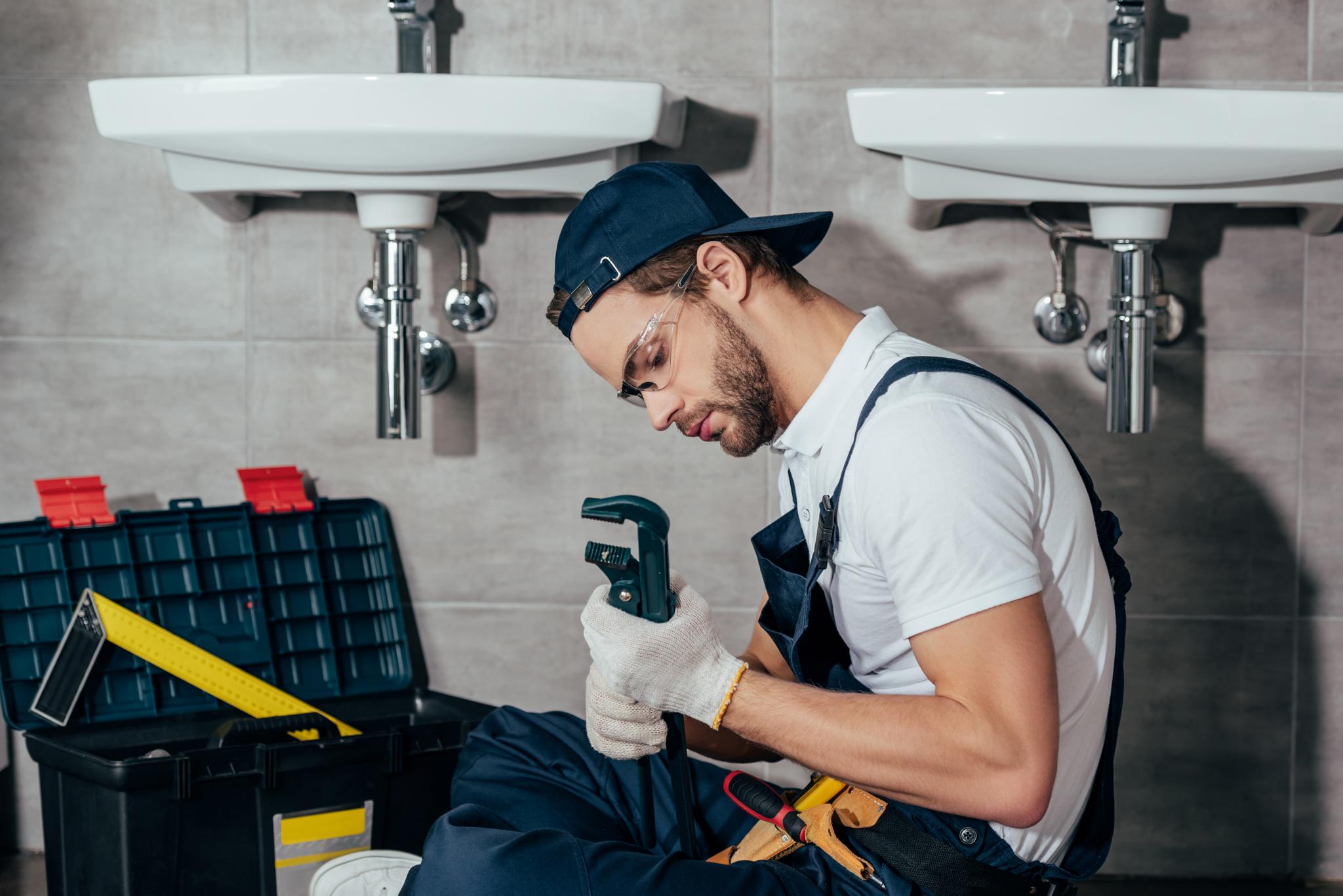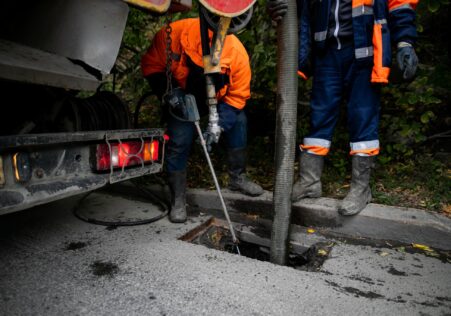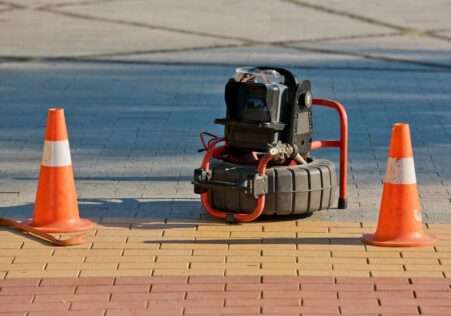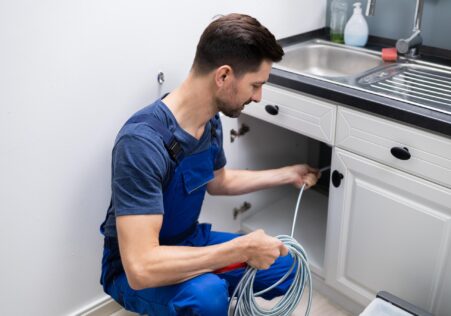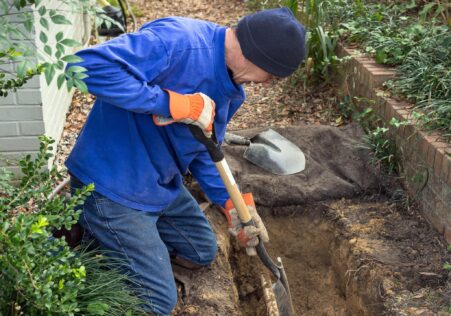What to Do When Your Toilet is Blocked: A Step-by-Step Guide

Toilet blockages can happen at any time, and are a common household issue. They can be unpleasant dirty, inconvenient, and messy and require immediate attention. However, you don’t need to call a plumber right away. In this blog we’ll guide you through simple steps to unclog your toilet in no time.
Key Takeaways
- Toilet blockages can be solved by using simple tools like a plunger baking soda
The Tools You’ll Need
Before we start we must be prepared with these tools:
- Rubber Gloves
- Plunger
- Baking Soda and Vinegar (Optional)
- A Wire Coat hanger, or a Plumber Snake (Optional)
Step 1: Turn off your water source valve.
The first thing to do when confronted with a blocked toilet is turning off the supply of water behind the toilet. This ensures that no water will enter the tank during your attempt to clear it. The valve is usually situated near to the base of tank on one side.
Step 2: Protect yourself by wearing rubber gloves.
You must protect your hands from potential bacteria or germs present in your toilet with rubber gloves prior to making use of any tool to clear the toilet.
Step 3: Use a plunger.
A plunger is without doubt the most effective tool for clearing up blocked toilets. The first step is to gently push down upon the plunger until all air is evacuated from it. then press firmly over the toilet bowl. Begin to plunging continuously up and down for around 20 minutes. The suction generated through plunging back and forth will remove any blockages.
Tips:
- Use a firm but controlled motion.
- Fill in holes around sinks and shower drains if they’re near to stop the pressure of air from escape as you plunge.
Step 4: Test baking soda with vinegar.
If the plunge doesn’t work, try this next tactic - pour half a cup of baking soda as well as one tablespoon of vinegar in the bowl. Let this mixture settle for approximately 15 minutes. It will fizz a bit before it slows down, pour hot water down (not boiling) to flush out the blockage.
Step 5 Utilize an iron coat hanger made of wire or plumbing snake.
If plunging, baking soda and vinegar have not worked the problem, it’s time to use a wire coat hanger or plumbing snake. Make sure you straighten your coat hanger’s wire until you have a long thin wire that has a hook bent at one end, or you can use your plumbing snake. It was designed specifically for clearing drain obstructions. Place the snake into the drain hole in your toilet and then twist to turn, push, at the same time until you sense resistance. this is where the blockage typically occurs. Make an effort to break any blockages with a back-andforth motion but without causing any damage to your pipe.
Note:
- Be careful not to push or pull actions too hard, as they could create more problems.
Step 6: Switch on the water supply and verify the results.
Once you’ve cleared up any blockages, it is important to switch on your water valve on your toilet bowl once more. Make sure to flush it several times to make sure that all water flows smoothly now!
| Tools | Description |
|---|---|
| Rubber Gloves | Hand protection from potential bacteria or germs present in the toilet bowl. |
| Plunger | Most effective tool for clearing up blocked toilets. Press firmly over the hole in your toilet bowl and plunge vigorously up and down for about 20 seconds. |
| Baking Soda and Vinegar | Mixture to use if plunging doesn’t work. Pour half a cup of baking soda and one cup of vinegar into the toilet bowl. Let this mixture settle for about 15 minutes, then pour hot water down (not boiling) to flush out the blockage. |
| Wire Coat Hanger or Plumbing Snake | Tools to use if both plunging and baking soda/vinegar methods have failed. Straighten the wire coat hanger until you have a long thin wire with a hook bent at one end or use the plumbing snake, which is designed specifically for clearing drain clogs. |
Common Questions and Answers
How can I tell when my toilet has become blocked?
Some of the more common symptoms of a blocked toilet is when water rises to the top of the bowl after flushing. It is also possible to notice that water drains away slowly or you hear gurgling sounds coming out of the bathroom.
What can I do if my bathroom is blocked?
If you suspect that the toilet is blocked then avoid flushing it over again since this could result in flooding. Instead, shut off water flow to the valve in front of the toilet and employ a plunger to try to eliminate any blockages. If this fails contact Melbourne Blocked Drains Plumbers for professional help.
Do I have the ability to stop my toilet from getting blocked?
Yes! There are a variety of things you can do to avoid your toilet becoming blocked. These include avoiding flushing items that are not biodegradable, such as the sanitary products, wet wipes or cotton wool into the toilet. You should also avoid pouring grease or oil down the sink, as it can cause solidification and block pipes.
When should I contact an experienced plumber about the problem of a toilet that is blocked?
If you’ve tried to flush into your toilet, but it won’t unblock or you suspect there’s a bigger issue with your plumbing system that is causing frequent blockages, it’s time to seek out a professional plumber like Melbourne Blocked Drains Plumbers . We have years of experience dealing with all kinds of plumbing problems and can quickly diagnose and correct any issue without causing any disturbance to the home.
How often should I schedule my drains cleaned?
It’s recommended that you have the drains cleaned out by experts like Melbourne Blocked Drains Plumbers every 1-2 years. This will reduce the chance of blockages and help keep your plumbing system running smoothly. If you regularly experience drain blockages or slow draining water, despite taking precautions not to clog them, then regular cleaning is beneficial.
These strategies are simple to implement in the majority of cases, and these items are available in households. If you’re experiencing a toilet that is blocked, before being anxious after attempting the strategies, you should contact Melbourne Blocked Drains Plumbers ‘s expert plumbers located in Melbourne , if you’re in search of professional help with those blocked toilets.
Additional Information
- The Importance of CCTV Drain Inspection in Commercial Properties
- Maximizing the Benefits of a CCTV Drain Inspection: Preparations You Should Make
- Say No to Chemical Drain Cleaners: How They Can Damage Your Pipes
- DIY Drain Cleaning: How to Safely Tackle Clogged Drains
- Saving Time and Money with CCTV Drain Inspection for Drain Clearing
- Why Trenchless Pipe Relining is the Future of Condominium Plumbing
- Understanding CCTV Drain Inspection and the Benefits for Your Home
- Future-Proofing Your Plumbing System with CCTV Drain Inspection
- When to Schedule a Professional Drain Cleaning Service
- The Advantage of CCTV Drain Inspection in Detecting Root Infiltration Early


